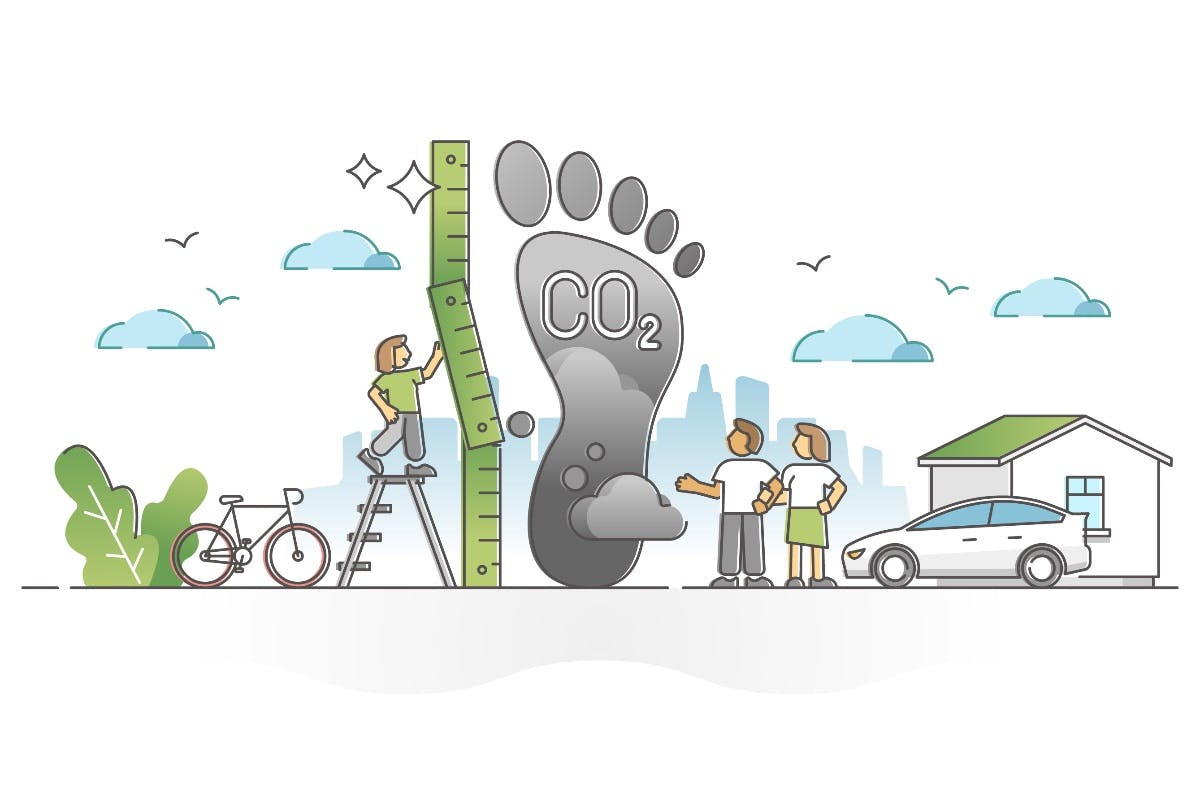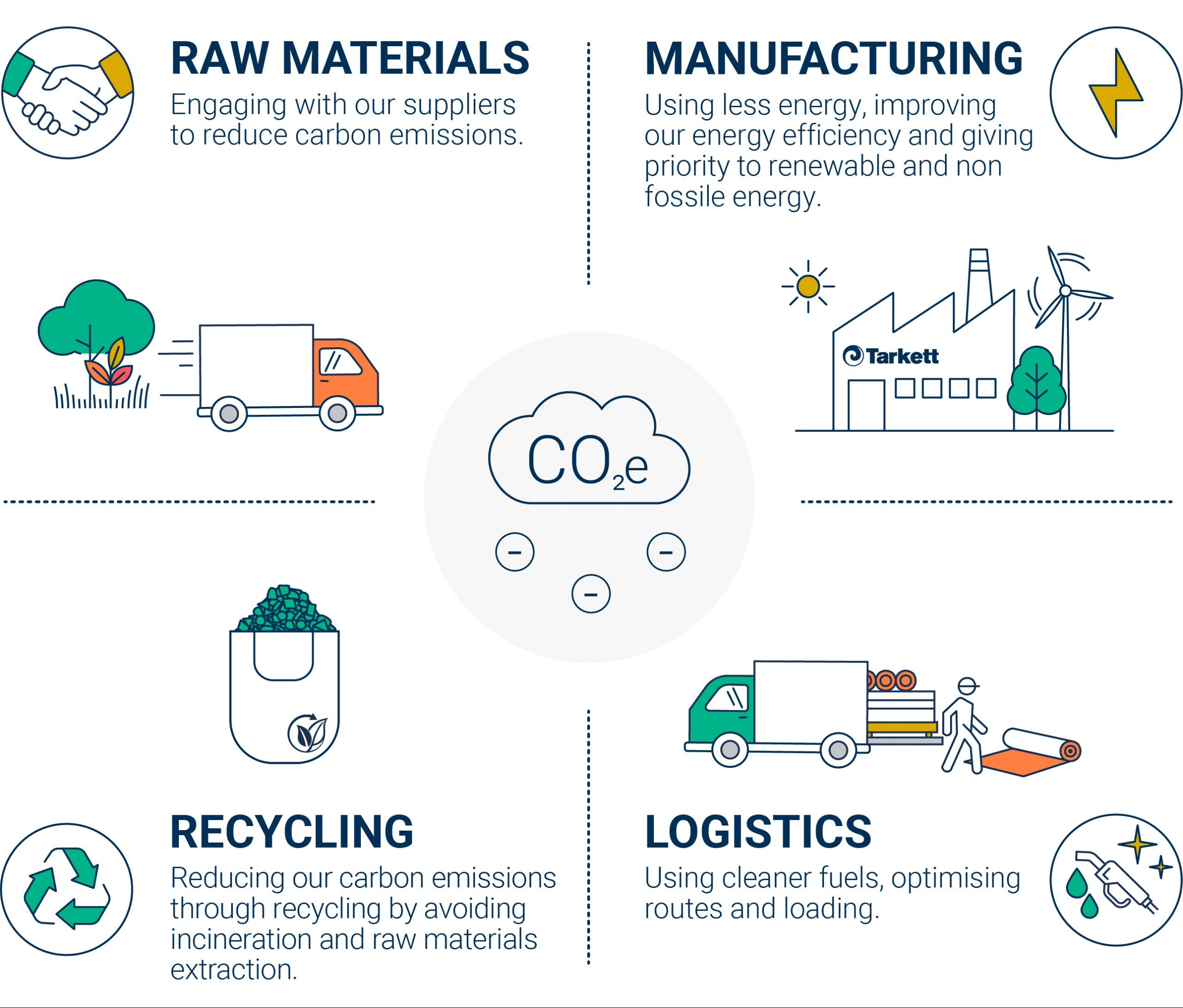Carbon footprints of energy consumption [ edit ]
The major contributors to
carbon
footprints are: food, consumption, transportation, and household energy. Food is a major contributor to carbon footprints, and meat in particular is an issue.
 Livestock is responsible for a significant amount of greenhouse gas emissions, and beef is one of the biggest contributors. One kilogram of beef has the same amount of emissions as driving your car about 160 miles. Completely eliminating meat is not necessary, but reducing meat intake helps lower your carbon footprint. Transportation of foods, pesticide use, and purchasing food out of season also contribute to carbon footprints. Processed foods have higher emissions than fresh food as it includes transportation, production in factories, and additional packaging.
Livestock is responsible for a significant amount of greenhouse gas emissions, and beef is one of the biggest contributors. One kilogram of beef has the same amount of emissions as driving your car about 160 miles. Completely eliminating meat is not necessary, but reducing meat intake helps lower your carbon footprint. Transportation of foods, pesticide use, and purchasing food out of season also contribute to carbon footprints. Processed foods have higher emissions than fresh food as it includes transportation, production in factories, and additional packaging.
Carbon footprints of transport [ edit ]
Much of the confusion around
footprint
s comes down to the distinction between 'direct' and 'indirect' emissions.
 The true carbon footprint of a plastic toy, for example, includes not only direct emissions resulting from the manufacturing process and the transportation of the toy to the shop: it also includes a whole host of indirect emissions, such as those caused by the extraction and processing of the oil used to make the plastic in the first place. These are just a few of the processes involved. If you think about it, tracing back all the things that have to happen to make that toy leads to an infinite number of pathways, most of which are infinitesimally small.
The true carbon footprint of a plastic toy, for example, includes not only direct emissions resulting from the manufacturing process and the transportation of the toy to the shop: it also includes a whole host of indirect emissions, such as those caused by the extraction and processing of the oil used to make the plastic in the first place. These are just a few of the processes involved. If you think about it, tracing back all the things that have to happen to make that toy leads to an infinite number of pathways, most of which are infinitesimally small.
Where etotal is the total ghg emissions from the entire the life cycle of biofuel (kg co2 eq/unit of biofuels); eluc is the ghg emissions from carbon stock (c-stock) changes caused by luc and management; ecul represents the ghg emissions from cultivation and harvesting of feedstocks; efp is the ghg emissions from feedstock processing; eecv represents ghg emissions from biofuel conversion; eu represents the ghg emissions from the use of biofuel in vehicle; etd is the ghg emissions from transport and distribution over the entire life cycle; eext is the ghg emissions from the extraction of input material over the entire life cycle; and ecrd represents ghg credits obtained from the biofuel system (e.
Carbon footprints of products [ edit ]
Corporate and product carbon footprints speak to the fact that we cannot manage what is not measured. Beyond responding to stakeholder or client requests, carbon footprints are a necessary first step toward voluntary emissions reduction efforts or commitments, and toward being strategically positioned for future emission reduction mandates. As for the bottom line, many companies have found that carbon footprints help them spot significant cost saving opportunities, as well as opportunities to significantly reduce the carbon-intensity of their products and services.
Meat products have bigger carbon footprints per calorie than grains or vegetables. That's because animals like cattle, sheep and goats produce a lot of methane gas. In 2016, they produced 170 million metric tons in co2e of methane, according to a carbon footprint fact sheet compiled by the center for sustainable systems at the university of michigan. And yes, all that ends up in the atmosphere. Meat isn't the only problem, the center says. Dairy products like cheese and yogurt contribute almost 19% of greenhouse gases emitted -- even worse than poultry, seafood and eggs, which only contribute 14% of greenhouse gases.
Carbon footprints at companies can be measured by using three ways in which greenhouse gas emissions are generated: scope 1, 2 and 3. Scope 1 emissions are those that are directly generated by the company, such as an airline emitting exhaust fumes. Scope 2 emissions are those that are created by the generation of the electricity or heat needed by the company to produce its main products. An electricity utility would therefore have relatively low scope 1 emissions caused by its infrastructure or grid, but high scope 2 emissions if its power came from the burning of fossil fuels rather than from renewable sources.
Definition: the total amount of greenhouse gas emissions released into the atmosphere that is produced directly or indirectly by human activities. It can be calculated to measure the emissions emitted by products, services, individuals, companies or nations. The standard unit of measurement for carbon footprints is carbon dioxide equivalents (co2e). See also: carbon budget.
Causes [ edit ]
How we are achieving our targets? well we ensure that all new investments by our businesses are carbon neutral, and have dedicated investment programs on renewable energy and energy efficiency, we set-up in the light of adopting an internal carbon price for example. In 2018 we concluded a new €1 billion revolving credit facility with our long term banking partners that links the interest rate payable to our ghg emission reductions. , underscoring the importance of sustainability in everything we do - including corporate finance. Furthermore, as our suppliers play a key role in delivering our strategy and targets, we are working closely with them on emission reduction projects through our co2reduce program.
© the british standards institution (current year) impartiality is the governing principle of how bsi provides its services. Impartiality means acting fairly and equitably in its dealings with people and in all business operations. It means decisions are made free from any engagements of influences which could affect the objectivity of decision making. As an accredited certification body, bsi assurance cannot offer certification to clients where they have also received consultancy from another part of the bsi group for the same management system. Likewise, we do not offer consultancy to clients when they also seek certification to the same management system.
Schemes to reduce carbon emissions [ edit ]
Assessing your carbon emission quota and measuring your true carbon footprint is easy with carbon management services from sgs. Call our environmental experts today to find out how to reduce your greenhouse gas emissions and verify your carbon footprint. In order to benefit from emission trading and product labelling schemes that give you a competitive edge, you must measure your carbon footprint. Your market may also have carbon emission and carbon equivalent quotas to meet and regulatory or voluntary requirements to assess and verify your organisation’s carbon footprint. We are recognised as a global leader in the verification of greenhouse gas emissions.
Comments
Post a Comment